Recording Retreats: Pilot Recording Studios, Berkshire County in Western MA
By now, we’ve heard enough stories about the closing of large-scale Manhattan recording studios for it to have become something of a cliché.
We all know how it goes: Rising rents and a floundering music industry contributed to so many huge and upscale meccas of sound being priced out of the once-seedy neighborhoods they had long called home.
What we hear about far less often are stories of Manhattan studios that have reopened elsewhere, bigger and arguably, better than ever before. That’s probably because not many of them do.
But at least one has. Enter Will Schillinger’s Pilot Recording Studio which, until 2007, operated out of Chelsea, a now-gentrified New York City neighborhood that sits just below Hell’s Kitchen and the old Garment District.
Today, the new Pilot Recording occupies a beautiful old church building in Housatonic, Massachusetts – a small town in the scenic Berkshire Mountains.
It sports an enormous SSL console (an 80-input 4K G+, almost 20 feet long) as well as a huge live room, a pair of ample isolation booths, 6 bedrooms where clients can stay while completing their projects, and one of the most comprehensive vintage mic collections on the eastern seaboard.
Moving from Manhattan
Schillinger had been steeped in the New York City studio scene since 1978, when he enrolled at the then-new and experimental Institute of Audio Research. At IAR, he learned from instructors like Phil Stein and the legendary Al Grundy. From there, he got straight into the audio field, mixing for Broadway shows like Evita and Dancin’, and working in the studio at RPM.
“I don’t think there was a major studio in New York that I wasn’t on staff at for some period of time,” says Schillinger.
He ended up spending 8 years at the Record Plant, became chief engineer at Marathon, and worked stints at Electric Lady, Penny Lane, RPM, and Atlantic. He also freelanced, both here and across the pond at Abbey Road, and helped to build “dozens” of New York studios, including the rooms at Atlantic, Right Track and Master Sound Astoria – all before opening his own place, Pilot Recording Studios, in 1993.
“I’m most interested in the recording of organic music,” says Schillinger. “Music that is not really an overly processed production. I like capturing a band, live in the room and with little embellishment, whether it be straight-ahead jazz or rock n’ roll. The band comes in, you set ’em up, and away you go.
“Of course, I’ve also made many records where you spend months upon months doing overdubs, piecing it together,” he says. “But for me it still all comes down to basic tracking.”
Throughout his career, Schillinger ended up spending much of his time either on the tech side, or working with musicians that fit that performance-based mold: Ambitious songwriters like Marshall Crenshaw, Junior Brown and Warren Zevon; gritty trailblazers like Bo Diddley and Burning Spear; or accomplished players like the seminal jazz pianist, Ahmad Jamal.
But eventually, there came a time when Manhattan no longer seemed like the place to do that. With a few years left on his lease and clients still knocking on his door, Schillinger cashed in his chips and started looking for his next challenge elsewhere.
“At certain point, I was kind of over New York City,” he says.
“I had a house up in the Berkshires for a while and had toyed with the idea of moving for quite some time. The intrigue was gone for me. The studio industry was all but finished; the old model did not seem to work any longer. Studio rates were going down and the rents were going up.”
Schillinger has been a pragmatist as long as I’ve known him. When we first met, it was in his final years at Pilot, and I became an assistant there briefly, near the beginning of my own career. Will knew then, as he knows now, that smart decisions are made by stopping to have an honest look at the realities that often hide right beneath our nose. And he knows that if you learn how to read them, the numbers just don’t lie:
“I recently looked at a work order for a session I had done 30 years ago, and the rate for the session was $195 per hour. This was back in 1984. Rents were probably 20% what they are now, and the studio rates were close to twice what they are today.
“Near the end, we needed to have at least 2/3rds of the days booked just to break even – not to mention make money. Obviously, we do this job out of love. But you’ve also got to eat. There were a lot of studios where you were better off turning them into condos like Hit Factory did, rather than trying to sustain a large multi-room facility.
“That said, for me, it’s still the only way to properly record music.”
So after nearly 30 years in the business – and 15 years in his own studio – Schillinger let his landlords buy him out of his lease, and looked for a new place to call home.
Music in the Mountains
In recent years, the kinds of professional recording studios that used to concentrate in Manhattan have had one of three options: Get smaller, get into post-production, or go elsewhere.
These days, the biggest and busiest music spaces in the Northeast are increasingly cropping up in one of two types of places: A) Lower-priced urban areas (which has led to the recent recording renaissances in places like Brooklyn, Philadelphia and Pawtucket); or B) A good two-to-three hour drive outside of the major cities.
While younger engineers are often content to stake out a spot in an up-and-coming city neighborhood and wait for the tide to rise, many of the longtime veterans have taken that second approach: Build something beautiful, away from all the stress and distraction of the city, and then invite your clients to come to you.
After looking at countless spaces, Schillinger settled on a beautiful old church which had just recently fallen out of use. This has become an increasingly common choice for those looking outside the cities, as evidenced by studios like the Barbershop in Hopatcong, NJ, or Henry Hirsch’s Waterfront Studios in Hudson, NY.
The twin forces of declining church attendance and urbanization have made opportunities like these pop up throughout the country. (And for many musicians, music is church, anyway.) For the new Pilot Recording, a space like this fit the bill perfectly.
“I’m a big fan of high ceilings,” Schillinger says. “And I’m over the concept of building a reflection-free studio as they were built in the 80s through the 90s. I think people respond to the ‘squareness’, if you will, of a room like Abbey Road or this one. Having a room with an identifiable soundstage…it translates on a recording as a believable space.
“This room happened to come with Celotex on the walls, which was a very desirable material that was used in the 50s and 60s. It’s the stuff that was used at many of the large room recording studios in the early 20th century. So it already sounded great. We only made a few changes.”
Rather than reworking the space from scratch with a conventional “room within a room” buildout, Schillinger instead began reinforcing the exterior of the building in order to prevent sound from leaking in or out. This also had the benefit of allowing him to preserve the church’s bright and vibrant Tiffany glass windows.
For the control room, Schillinger broke with tradition and put his SSL console, ADAM S3A nearfield speakers, and Augspurger main monitors across the long wall, using an array of custom-made QRD diffusors to make the back wall virtually disappear. Unlike the live room, the control room a was major construction project, designed from the ground up by Schillinger.
“I was able to create a wide sweet spot which to me was very important. It was crucial for me to make it so that the artist, the producer and the engineer can all sit in the sweet spot. That’s usually not the case. At most studios you can fit the engineer and about half of the artist’s head in the sweet spot,” he laughs.
The new Pilot Studios make use of the entire building. In addition to the two main rooms, twin iso booths and six bedrooms, Schillinger has ingeniously retrofitted the old bell tower into an adjustable echo chamber.
Inspired by the chamber at Abbey Road, Schillinger set up a pair of microphones at the top of the tower. At the bottom of this vertical echo chamber lies a pair of speakers, which sit on top of an elevator platform. This way, the engineer can control the decay of the chamber in real time, using remote control to raise or lower the platform.
Looking Forward
“Certainly this is an ideal scenario in this day and age,” says Schillinger. “People want to get out of the city. They want to get into a world-class studio for a reduced rate. Think about how much it would cost to put up in a band in New York City. This is all-inclusive. We feed them, we make them feel at home, we have everything you need. There’s also a great staff, including Brett Long, who has been with Pilot since the beginning of the new facility. He was instrumental in the construction phase, as well as being a great second engineer and assistant.”
Will Schillinger seems happier than he was in the city and it makes for an honest sell. Since moving up to the Berkshires full time, he’s begun taking 100-mile nature hikes once a year, and has found time for his biggest passion and hobby outside of his studio work: Flying.
Since 1990, Schillinger has been a licensed pilot (hence the studio name.) He originally set foot in the cockpit back in 1988, and has never looked back. “It’s a very humbling experience,” he says.
“The majority of mishaps are made by pilots who think they have it all in check. Typically, operator error caused by cockiness, complacency or insufficient knowledge. So, flying keeps me focused. As with audio, it is a constant learning experience,” he says. “Just as it should be.”
I ask him what advice he’d give others in the studio business right now.
“Don’t decide you have it all figured out,” he answers. “You might have your ways, but there’s always something new around the corner.”
Valuable advice for our industry. In the music world, it’s about time we decided we’re going to figure out how to get back off the ground.
Justin Colletti is an audio engineer, educator and journalist.
Please note: When you buy products through links on this page, we may earn an affiliate commission.







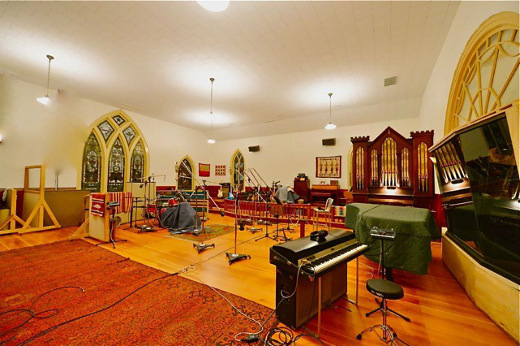
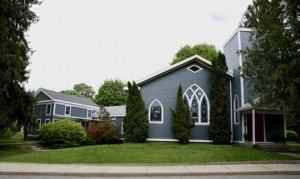
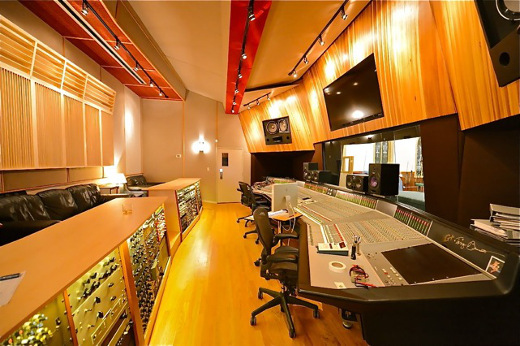
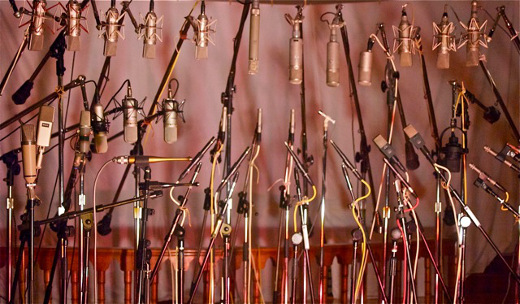
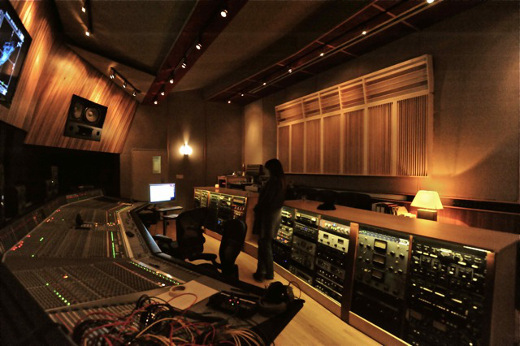
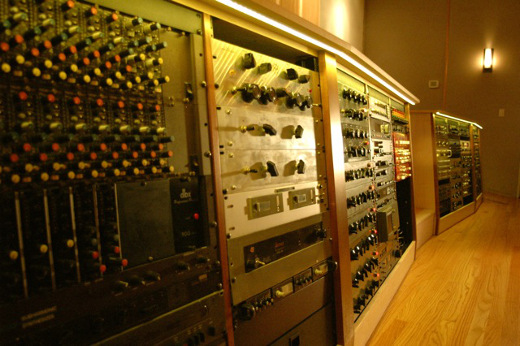
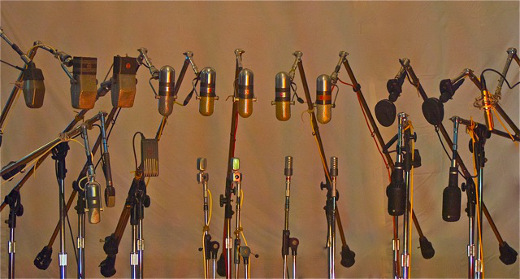
Lloyd David Lieberman
November 20, 2013 at 6:59 pm (11 years ago)congratulations for reading the writing on the wall….BTW, everyone says they’ve got a gr8 mic collection…this ones almost intimidating…
Lloyd D Lieberman AES